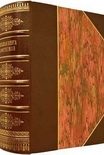Last Child in the Woods: Saving Our Children From Nature-Deficit Disorder by Louv, Richard (the two towers ebook .txt) 📕

Read free book «Last Child in the Woods: Saving Our Children From Nature-Deficit Disorder by Louv, Richard (the two towers ebook .txt) 📕» - read online or download for free at americanlibrarybooks.com
Read book online «Last Child in the Woods: Saving Our Children From Nature-Deficit Disorder by Louv, Richard (the two towers ebook .txt) 📕». Author - Louv, Richard
For Beatrix Potter, the connection between the mystery of nature and imagination is even more direct. Potter, one of the most famous children’s authors, exhibited ruthless collecting abilities. As her biographer Margaret Lane tells it, Beatrix and her brother “were not squeamish, and there was a toughness about some of their experiments which would have surprised their parents.”
The two siblings “smuggled home innumerable beetles, toadstools, dead birds, hedgehogs, frogs, caterpillars, minnows and sloughed snake-skins. If the dead specimen were not past skinning, they skinned it; if it were, they busily boiled it and kept the bones. They even on one occasion, having obtained a dead fox from heaven knows where, skinned and boiled it successfully in secret and articulated the skeleton.” Everything they brought home, they drew or painted, and sewed the pieces of drawing paper together to make their books of nature. The depictions were realistic for the most part, “but here and there on the grubby pages fantasy breaks through. Mufflers appear round the necks of newts, rabbits walk upright, skate on ice, carry umbrellas, walk out in bonnets . . .”
Nature offers a well from which many, famous or not, draw a creative sense of pattern and connection. As Moore points out, nature experiences “help children understand the realities of natural systems through primary experience. They demonstrate natural principles such as networks, cycles, and evolutionary processes. They teach that nature is a uniquely regenerative process.” An appreciation of these patterns is essential in fostering creativity, which of course is not the sole domain of the arts, but of science and even politics.
Richard Ybarra, a political operative from California and son-in-law of the late labor leader Cesar Chavez, describes Chavez’s seemingly inexhaustible power of spirit and energy and how his early childhood prepared him for a deep understanding of natural—including human—systems:
He always had a connection to nature that went back to his days growing up on a farm on the Gila River. He always had the river connection. Even his magical life-twists carried him full circle back to the very river region where his life began. His dad raised him to understand the land, soils, water and how things work. His mom raised him to know about herbs and all that nature produced. It is obvious in so many ways that his genius was very much derived from life’s simplest and most basic processes and systems. He could always see with great clarity, no matter the complexities or challenges.
Of course, not everyone with childhood experience in nature is affected in this particular way, and not every child who is touched becomes a Chavez, Roosevelt, Potter, or Clarke—or, thankfully, Joan of Arc. Creativity draws from other immersions as well. When Matthew and I explored the biographies of more recent creators, mentions of nature as inspiration began to fade. Creative people who came of age in the 1970s—rock stars among them—seldom described inspirational childhood experiences in nature. So, it seems, creativity occurs without natural influences, but it may have a different tempo.
Nature, Creativity, and Ecstatic Places
Economist Thorstein Veblen once offered an alternative way to define serious research. Its outcome, he said, “can only be to make two questions grow where one question grew before.” By this definition, Edith Cobb was a good researcher. She offered a deep box of loose parts, and influenced a generation of childhood researchers.
In 1977, after years of dedicated (if not strictly scientific) research, Cobb published her influential book, The Ecology of Imagination in Childhood. Though she had a degree from the New York School of Social Work, Cobb was not a sociologist; her expertise came mainly from her many hours of observing and documenting children at play, and her years of reflection on what she had learned about children’s relationships with nature. She based much of her analysis on a collection of some three hundred volumes of autobiographical recollections of childhood by creative thinkers from diverse cultures and eras. She concluded that inventiveness and imagination of nearly all of the creative people she studied was rooted in their early experiences in nature.
Drawing also on her observations of children’s behavior, Cobb posited that the child’s “capacity to go out and beyond the self derives from the plasticity of response to environment in childhood.” She wrote, “In the creative perceptions of poet and child we are close to the biology of thought itself—close, in fact, to the ecology of imagination. . . .” Creative thinkers, she believed, return in memory to renew the power and impulse to create at its very source, a source which they describe as the experience of emerging not only into the light of consciousness, but into a living sense of kinship with the outer world. These experiences, Cobb believed, take place primarily in the middle years of childhood. “Memories of awakening to the existence of some potential, aroused by early experiences of self and world, are scattered through the literature of scientific and aesthetic invention. Autobiographies repeatedly refer to the cause of this awakening as an acute sensory response to the natural world.”
Many years after Edith Cobb wrote her pioneering and controversial work, environmental psychologist Louise Chawla—who had been inspired to specialize in this area by The Ecology of Imagination in Childhood—closely examined Cobb’s research. Although she found it flawed in technique, she was intrigued by the questions it raised. She concluded Cobb’s theory must be amended to allow for different





Comments (0)